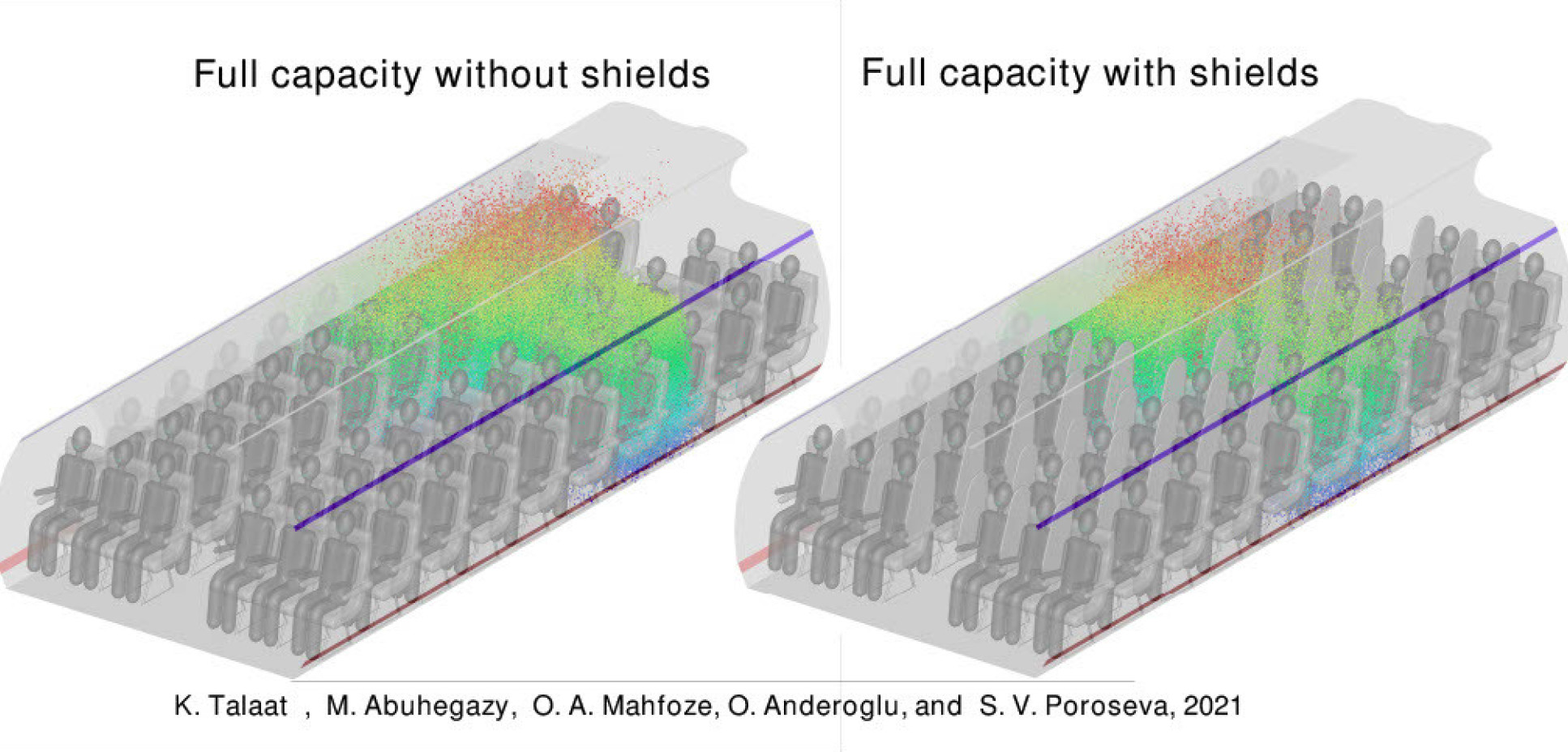COVID-19 research: sneeze guards may make flights safer


An Aeronautics PhD student is among a team of researchers who have been identifying measures to reduce COVID-19 transmission aboard aircraft.
Omar A. Mahfoze has collaborated with researchers from the University of New Mexico on the study, recently published in the Physics of Fluids journal.
The study aims to understand the effect of reducing passenger capacity, and to compare alternative intervention measures such as using sneeze guards (or sneeze guards) placed between passengers on a full capacity flight.
Sneeze guards
With the prospect of new SARS-CoV2 variants emerging, and the airline industry seeking to rebound from a difficult year, the need to make air travel COVID-secure and financially viable has become ever more important.
"...our first study... suggests that placing shields between passenger seats is a more effective intervention than reducing the capacity of a flight." Omar A. Mahfoze PhD Student, Department of Aeronautics
Many airlines have opted for reduced capacity flights (by leaving the middle seats vacant) in the hope of reducing the spread of the aerosol particles. But this approach has been questioned: the strong airflow inside the cabin, in addition to the increased ticket prices, make this option less financially viable for both consumers and airlines.
Therefore, the team has proposed sneeze guards to be placed between passengers to limit the lateral transition of aerosol particles. The sneeze guards are envisaged as thin plastic sheets with flexible supports.
The Study
To investigate aerosol transmission and different intervention measures, the team simulated the flow of air and the movement of aerosol particles emitted from a patient onboard a Boeing 737.
They considered three scenarios:
(a) a model at full passenger capacity of 60 passengers
(b) a model at a reduced capacity of 40 passengers
(c) a model at full capacity with sneeze guards/shields between passengers
The investigation considered a wide range of particle sizes (1–50 μm), which spanned particles released during exhalation, speech, and coughing.

Commenting on the investigation, Omar says “While this is our first study, it suggests that placing shields between passenger seats is a more effective intervention than reducing the capacity of a flight. Even on full capacity flights, the shields help to reduce the inhalation rate of the aerosol particles by 60 to 70% (depending on the aerosol size). We also predict the shields can reduce the droplets’ deposition onto passengers’ bodies and clothes by around 45%."
Omar says that another major finding is that most of the aerosol particles can take two to three minutes to deposit on the surfaces or to be filtered by the ventilation system. “That provides a guideline for boarding procedure, flight operation and planning. For example, an airliner may consider boarding the aeroplane in groups, filling the back seas first with a time gap of three minutes. Therefore, we believe it would allow airlines to operate safer, full capacity flights with cheaper operational costs.”
Omar says the paper makes it clear that there are limitations to the approach: “This study is for a specific model and has specific assumptions that are discussed in the paper."
"In future, we expect our work to cover some of these limitations. But in general, we still believe placing sneeze guards/shields between passengers is a more effective way of mitigating the spread of COVID than simply reducing the capacity of the aircraft.”
The team
“Simulation of aerosol transmission on a Boeing 737 airplane with intervention measures for COVID-19 mitigation”, Physics of Fluids, March 2021 by Khaled Talaat, Mohamed Abuhegazy, Omar A. Mahfoze, Osman Anderoglu, and Svetlana V. Poroseva.
Main photo credit: Markus Winkler on Unsplash
Article text (excluding photos or graphics) © Imperial College London.
Photos and graphics subject to third party copyright used with permission or © Imperial College London.